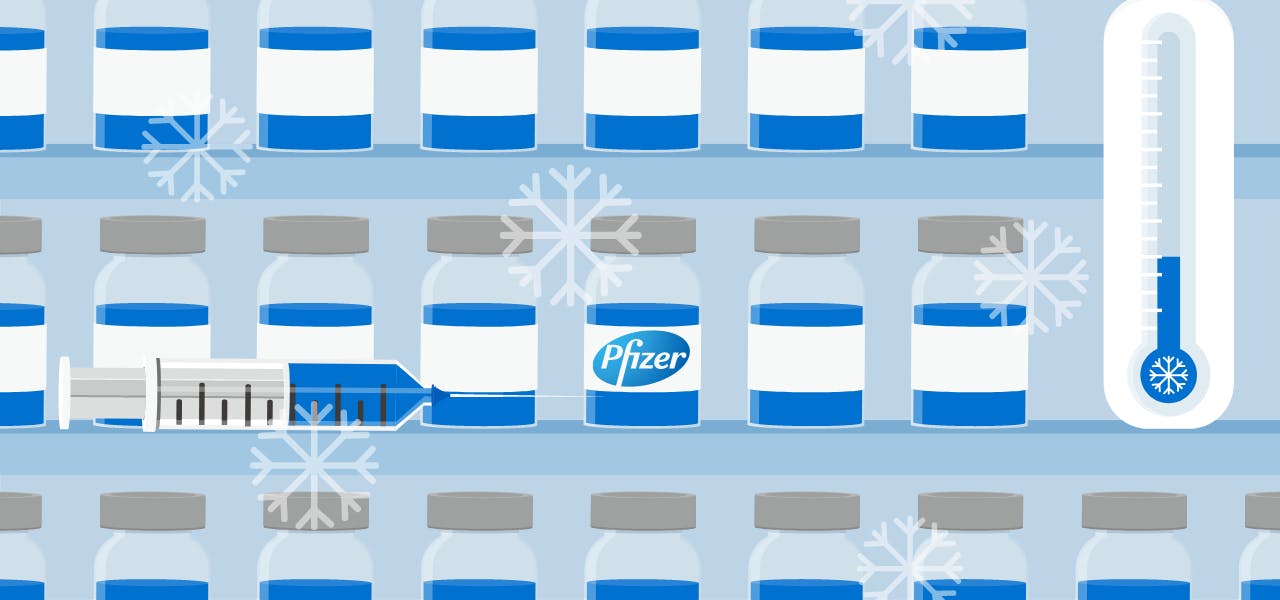Medical offices and facilities are required to have a separate cooling station where they store certain medications. These areas cannot be contaminated with anything else, used for food and drinks, or kept below certain temperatures at all times. If the faculty is found using the station for anything other than medications and vaccines or not cooling it properly, they can be fined heftily.
There’s a reason for the severity of the rules and punishments. The cold storage container is meant to keep the medication or vaccine active. Storing vaccines in medical facilities is a serious business, especially in the case of Pfizer’s COVID-19 vaccines. If the products aren’t stored according to their instructions, they can lose their effectiveness and cause serious harm to those who receive them. To ensure the safety of everyone, vaccines in particular must be stored at low temperatures.
The History of Vaccines
Vaccines are probably one of the most misunderstood and falsified categories of science. The controversy has sparked angry arguments and even violence among people, but the history behind vaccines is actually straightforward and centuries-old.
The beginning of immunization dates all the way back to the time of Buddhist monks, when they drank snake venom to ensure immunity to venomous snakes. In 17th century China, cowpox was used on open wounds to make a person immune to smallpox.
These natural practices opened the door for Edward Jenner to come up with a less, well, nerve-inducing way to bring immunity to a person. Considered the founder of vaccinology in 1796, Jenner used the cowpox, or vaccinia virus, in a needle to inoculate a 13-year-old boy against smallpox. When it worked, researchers used the idea to create the smallpox vaccine in 1798, and the mass smallpox vaccine was then used around the world, ultimately eradicating the disease completely by 1979.
But the problem of storing a live vaccine was an issue, until Louis Pasteur came up with the inactivated anthrax vaccine in humans, and his pasteurization technique to keep things cold. Since the inception of Jenner’s cowpox shot, vaccines against the plague, bacterias and many other diseases have proliferated.
In fact, the practice of creating vaccines is not a new thing, although the COVID-19 vaccine took some time to figure out.
Why Temperature is Crucial in Vaccine Efficiency
Pfizer was one of the first major pharmaceutical companies to roll out their version of the COVID-19 vaccine, but it has a large obstacle to deal with. In order for it to work, the vaccine has to be kept at -70° C, colder than Antarctica and much colder than the average storage freezer. Upon distribution, Pfizer has to provide special storage freezers and shipping containers in order to ensure the vaccine is kept at its ideal temperature.
While most vaccines have to be refrigerated, the COVID-19 vaccine is in a league of its own.
Pfizer’s is not the only option for a vaccine for this pandemic-inducing virus. Moderna and the U.S. National Institute of Allergy and Infectious Diseases have created a vaccine that also has to be kept frozen, but its requirement is –20° C, which is possible in a standard freezer. If necessary, the Moderna vaccine is capable of being kept at refrigerator temperatures for up to a month, making it a popular and more feasible choice.
But the reason for these frozen temperatures is because both vaccines rely on mRNA, messenger RNA that takes the instructions of how to build the coronavirus’ spike protein, to the human’s cells. Once the cell “sees” the instructions, they can produce a copy of the protein and “share” it with the immune system. That way, if the coronavirus enters the body, the immune system knows how to recognize it and can begin attacking it immediately.
How cold the vaccine must be kept is partly due to the chemistry connection between the mRNA and the DNA. RNA is unstable because of the fact that it is made up of ribose, whereas DNA is made up of deoxyribose. DNA, therefore, survives for generations and RNA cannot. To keep RNA “alive,” it has to be kept frozen. And if the mRNA used in the vaccine is highly fragile, it must be frozen at those sub-arctic levels, explaining why vaccines, especially the COVID-19 Pfizer one, must be kept at low temperatures.
